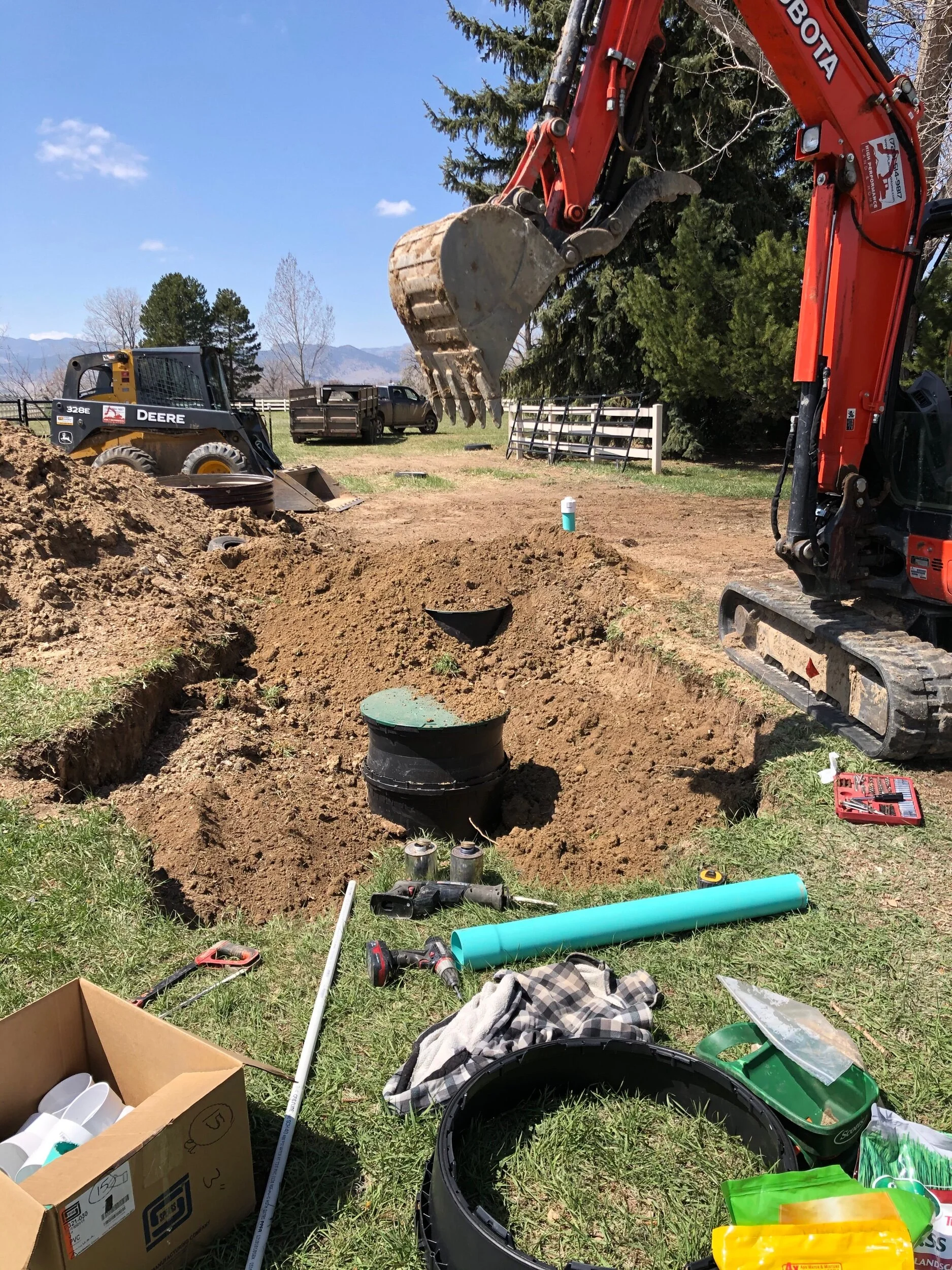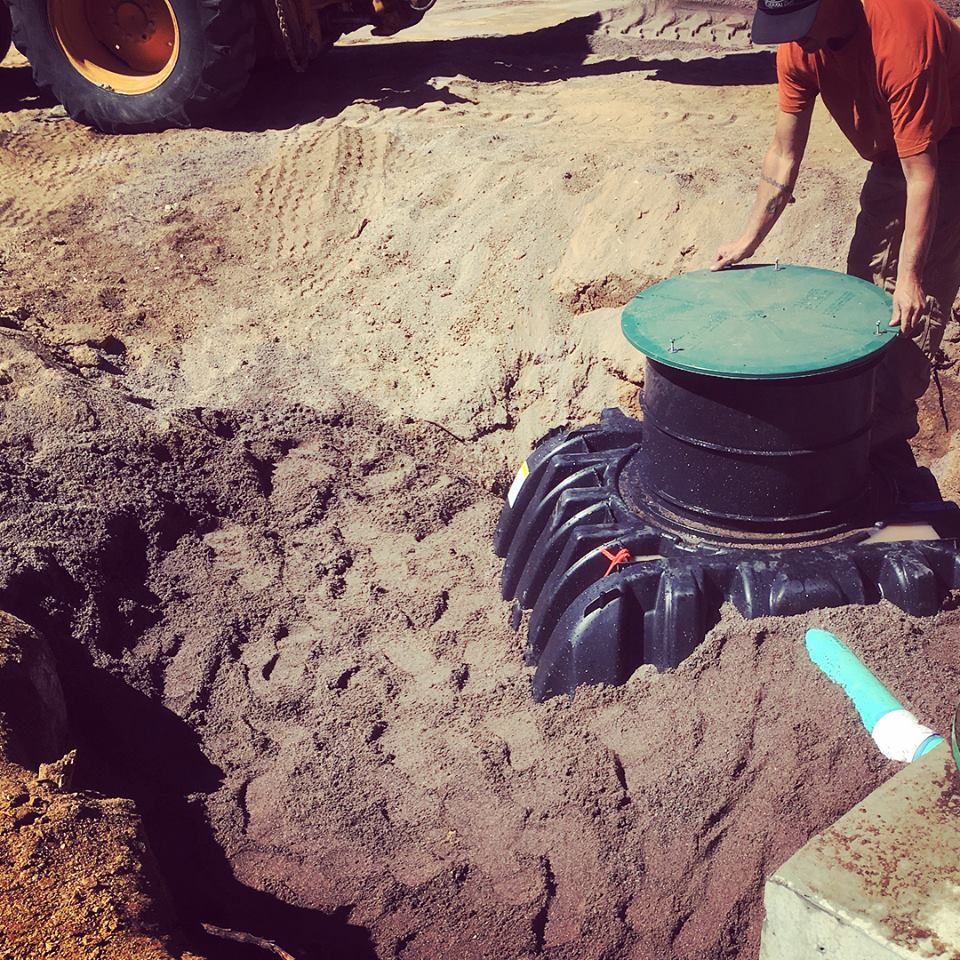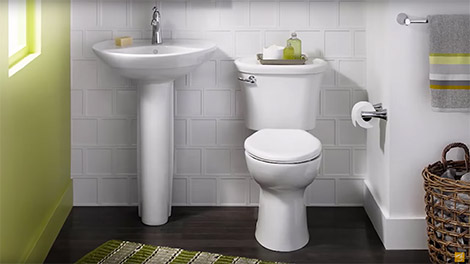*This is not legal advice. For official guidelines on Septic Permitting, please visit your local County's septic permitting website for regulatory guidance*
Getting Started with Septic Installation/Permitting in Boulder Colorado & Surrounding Areas
Welcome to our review of the process of septic installation for Colorado mountain properties. This is must read for those of you looking to purchase property in the Rocky Mountains! In this piece we will focus on the logistical, municipal, and regulatory factors that go into fostering a septic waste management system on your property, specific to the Rocky Mountains.
This may seem to be an arbitrary step in terms of the myriad other factors that you must review when establishing a mountain property. That being said, it becomes obvious rather quickly that the installation and maintenance of a properly functioning septic system is essential in the overall maintenance of a property and cannot be overlooked. Unfortunately, a part of that looking includes having to deal with things like local regulations, contractors, ordinances, etc. Fear not! Hopefully by the end of this article you will be able to address these things in a confident and straight forward manner and possess the septic system of your dreams!
Septic Permitting Details: Why Do you Need a Septic System?
We will start from the beginning - Why do you need a septic system in Boulder County and Jefferson County, Colorado? To answer this question, we will examine civic engineering and what we take for granted in well-developed places, which are far different from being in a deep, rural, environment. What I am speaking of is that in most cities, towns, villages, etc have a water supply and sewer treatment plants. These facilities are dedicated to cycling, cleaning, and working with water in all of its forms, from waste processing to drinking. The worst you have to worry about in a community with a sewer treatment plant is the fee that you have to pay every month for the disposal of the water and sewer waste from your home.
This is very different from living in a mountain town or homestead where you are going to have to install your own well and septic system. By moving into a rural setting you are moving into a totally different state of ownership in terms of a property. There is a ton of maintenance, laws, and upkeep that “city slickers” don’t have to worry about in terms of the properties they own. If you are going to occupy space in one of these off the grid locations in Colorado, you must look into how you plan to create and manage your own water waste management system, as well as a system for pulling in drinking water for yourself. This is a long and complex process which we will lay out in depth in this article. We will now move into the next phase of this process which will be the site evaluation.
Septic Permitting Process: Site Evaluation Professionals
A site evaluation is exactly what it sounds like. You will need to have a qualified professional (Surveyor/Engineering team) come onsite and look over the property meticulously in order to be order to determine your needs. This person can be a private contractor, or even someone appointed by the town, HOA, or property management firm that has an existing contract with those entities for such purposes. These professionals will be able to go over your land and determine water management needs, permitting legalities, and the locations on the land best suited to succeed from an engineering perspective.
Once you have completed your site evaluation and secured design/engineering plans, you must move into the phase of acquiring a septic permit and a well permit, these in turn being required in order to acquire a building permit.
Types of Permits for Building a New Home in Boulder & Jefferson County, Colorado
You will need a building permit to start construction on your well and septic system in Boulder or Jefferson County, Colorado. At this juncture there is a very important step, which is often overlooked and can cause all sorts of logistical headaches. This being that, in order to get a building permit, you must first apply for both a well permit and a septic permit, both separately. Obtaining permits for both of these two systems makes sure they are located the appropriate distance from each other and they are not run over by a driveway or too close to your home. This is all typically covered in a “site plan” which the surveyor of your property who did your evaluation should do for you upon completion of the inspection. This site plan will cover locations suitable for the well and septic system, placing, and soil analysis in order to find the perfect spot for your system that is not going to converge drinking water with waste, obstruct buildings, roads, or foundations, and won’t interfere with environment or other water sources (underground springs for example). Occasionally a given lot or other property may not accommodate a septic drain field and the "Site Evaluation" by the Health Department will require a "deeded location on an adjoining piece of property" to install the septic tank and/or drain field. Home owners should anticipate additional survey and builder time expense to make sure their drain field is located according to the "Site Plan" and the deed.
Considering the Age of Properties & Water Systems
Another thing to consider, while we are talking about this, is age. Age can pertain to several things in this instance, the first is legal (Although this is not legal advice - Speak with your attorney or contact your County permitting office!). Laws around septic tanks and water wells Boulder and Jefferson County shift over tie as new legislation is enacted and local and federal laws change. The well or septic tank placement that was OK during the 1970’s may not be viable for the regulations now. Always check to make sure that everything is up to date in terms of Boulder / Jefferson County Colorado codes and regulations. The second age related inquiry you must make is the land. Land shifts over time and moves according to a myriad of factors, including underground water, weather, tectonic movement, development, etc.
Make sure that all of your land diagrams and plots are up to date before moving forward with your Colorado foundation, septic, well, and other excavation projects . The last thing to consider is the age of any existing equipment on the land. You have to make sure that the septic system, septic tank, and septic lines, etc are all functioning and don’t need to be replaced. The same can go for a well system. There may have also have been technological advances in these systems that might be advantageous to utilize, perhaps replacing the old systems, whether by part or entirely. All of these things are worthy to consider when you are going through your lengthy septic permitting process in Boulder County and Jefferson County.
Septic Installation/Permitting Process & Regular Pumping
The importance of periodically pumping your Boulder County / Jefferson County septic tank to remove solids and liquids ensures that the solids do not enter your drain field and cause a drain field failure. This is important to look at for older systems, because if your drain field fails, a new drain field will need to be installed. This is a very costly endeavor, and if it can be avoided by merely checking to see if the septic system has been properly pumped from the get go, then why not? Make sure that when you are having your initial inspection that this is made a part of the process. It is often forgotten and the results from that can be disastrous in a whole bunch of crappy ways (pun intended).
Septic systems can be one of the most overlooked systems for homeowners and potential clients when purchasing or building a new home. This again speaks towards those accustomed to living in residential or city settings where waste and water management doesn’t need to be considered. In rustic and country settings like the Rocky Mountains and other rural parts of Colorado, homeowners must provide their own means for disposing of wastewater via septic system. These systems are regulated by your local government and require a much more hands on approach to waste management. This is required by law, so it behooves you to make sure that everything is in order, especially in terms of wear and tear on the system itself.
You have to take into account the difference between local / rural Boulder County and Jefferson County regulations vs. large-scale Colorado state regulations. Whereas in large cities and urban environments, the laws and regulations are designed to accommodate large volumes of people and their needs. This is the exact opposite in rural and smaller settings. You need to be proactive about advocating for your own needs and the needs of your property. Smaller communities require participation. No one is likely going to send a letter to your door until something large has happened and that can be easily avoided by looking into things like whether or not your septic system had been flushed, or your well cleared of fungi. Local laws can be hard to navigate and so it is important to network with people in your newfound community. They may know the answers to your questions, especially with regard to legality. Through developing these connections alongside developing your property, you can ensure that both remain prosperous for years to come. This can be essential, especially since a lot of the contractors, law enforcement personnel, and county representatives are also local residents.
More Details on Preparing for a Septic Tank Replacement
Property ownership and management can be quite complex in Boulder and Jefferson County, Colorado, even in terms of something as simple as where you use the bathroom! It is our hope that, by the end of this series, you will find yourself equipped to handle whatever crap comes your way (literally and figuratively). In this final part of the series we will focus on the septic systems themselves and how they function.
Components of your Rocky Mountain Septic System
Most common Colorado septic systems are composed of five components, a sewage pipe that carries wastewater from the home to the tank, a septic tank where waste is stored, a drain field, The soil the drains feeds into the distribution box, which distributes effluent liquid equally through the drain field soil.
Septic tanks in Boulder and Jefferson County are typically large, sealed, waterproof containers usually made of concrete, fiberglass, or polyethylene that is buried outside the home. As wastewater is stored in the tank, liquids and solids are separated. Solids settle at the bottom of the tank forming what is called “sludge”, while lighter solids and grease float to the top, this is called “scum”. After these first two parts are separated, the liquid effluent that is left is what enters the drain field. It is very important that this system functions well, as scum and sludge need to stay in the tank and not spread into the drain field, where they can clog up the pipes and cause build up in the field itself. If this occurs, you may require extensive and very costly repairs, so it is very important that you make sure that your septic system is in good working order through regularly pumping your system and avoiding over-use.
With your Boulder / Jefferson County septic system in good working order, naturally occurring bacteria and microorganisms help breakdown the waste, which is essential to the purification process. The bacteria also breaks down remaining sludge and scum that can reduce the actual volume of content by up to 40%, which eventually settles at the bottom of the tank to later be extracted through pumping.
The septic tank will need to be pumped periodically to remove the accumulated sludge, and tanks should typically be pumped every one to three years depending upon how heavily the system is used. That being said, there are many mitigating factors that can decide on this schedule. For example: sites located near creeks, rivers, and lakes will require more frequent pumping. In addition, tanks located in colder climates, like Colorado, require more frequent pumping than tanks located in warmer climates.
As the liquid effluent exits the tank, the liquid waste is usually gravity fed through a pipe into a drain field. In some cases, depending on site, the waste will need to be pumped uphill into the drain field. Some newer septic systems will apply a distribution box at this point in the system that allows an equal distribution of liquid effluent among the drain field for better absorption of the soil. A drain field usually consists of several trenches filled with gravel or open chambers that contain perforated piping that distributes the waste. If too much liquid waste enters the drain field, effluent can rise to the surface causing unpleasant odors and environmental health hazards. Properly sized septic systems and quality installation by professionals can prevent disruptions in the function of the system.
























